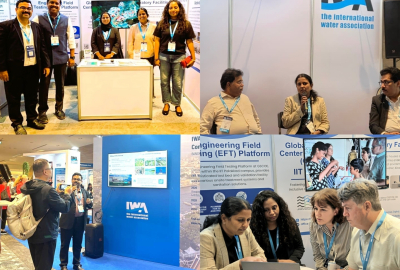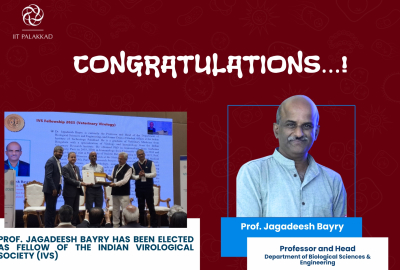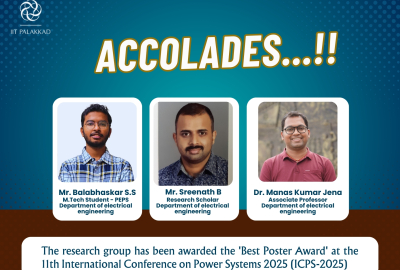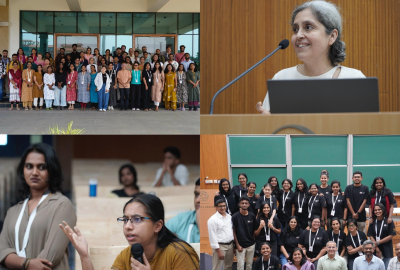
Day 9 of Science Quest and CRYSTAL: Marvels of Mechanical Engineering made simple
May 12th, the ninth day of the ongoing residential science camp for school students was dedicated to Mechanical Engineering. Dr. Santha Kumar Mohan tackled ‘Science, Engineering and Robotics’ in the first session for the day. He began by asking for the difference between science and engineering and observed that engineering can be considered “manual effort modified by some mechanical innovation”. Skimming over the stages of the Industrial Revolution, to get to present-day ‘Industry 4.0’, he noted that the invention of the steam engine, discovery of electricity, automation and robots (in 3.0) and now increasing cyber physicality differentiate the 4 stages. Noting that the kind of programming required for routine task performing chat-bots and automation are different, he introduced concepts of locomotion, manipulation, mobile robot, and robotic manipulator with the example of the robot ‘Atlas’ designed by Boston dynamics. He also discussed the luxury and human comfort element of more and more automation, with the example of Volkswagen car customization, and the evolution of robots from the 1960’s when they were considered akin to ‘wild animals’, to the present. He discussed the many ‘Ds’ that had marked this journey – from being seen as that which could address ‘dull’ and repetitive tasks for human beings (if the human cost of such replacement was not too high), to ‘dirty’ (eg: railway station washroom cleaning), or hazardous tasks like nuclear plant inspection and maintenance, or space missions. The trio of dull, dirty, dangerous was soon joined by other ‘D’s. Robots also came to be deployed for tasks which are ‘difficult’ (a cost-effective alternative to fulfill the industry’s purpose, such as in warehouse logistics for retail giants) or ‘dear’- giving economic benefit. And still later they found application for things ‘domestic’ and ‘dexterous’. He also highlighted that the defining features of new generation robots were: human friendly interaction, environment mapping, multi functionality & privacy and security. Talking about his lab and work on Service, Assistive, Field and Exploration (SAFE) Robots, he also shared interesting anecdotes related to robotics from his time at IIT Indore and in Germany, before welcoming and addressing questions from the students.
In the next session for the day titled “Journey of Materials: From Ore to Product” Dr Kanmani Subbu sought to impart to students an appreciation of manufacturing processes. He clarified that ‘ore’ in the title of his talk did not imply an exclusive focus on metals. He urged students to identify the various parts of an ordinary ball point pen, and then identify the materials, and quantities of these that went into its making. A video supplemented the student’s observations and offered more information. Thinking along similar lines about various other things like a lawn mower, piano, car, and plane, drove home the point that any product is not a single entity, there are many components to it. Converting a raw material to a finished product is what is called manufacturing. Machinery, tooling, power and labour are the components of manufacturing. The session went on to discuss classification of materials – metals, ceramics, polymers and composites, the extraction of iron and manufacturing process more generally, through processes like casting, rolling, forging, joining (with nut and bolt, screw, welding or riveting) and machining (turning-shearing, drilling, milling, grinding), Powder metallurgy, and Additive manufacturing or 3-d printing. A few of these were going to feature in demonstrations planned for the latter half of the day.
In the afternoon students made their way in batches to the Central Workshop and Applied Mechanics Laboratory. They were able to see the working of a lathe, vertical milling machine, radial drilling machine, and observe arc welding, gas welding and power tools. At the Applied Mechanics Laboratory they got to see and learn about the Universal Testing Machine, Plastic Injection Moulding Machine, Pneumatics Training kit, Visualisation of Streamlines in an Open Channel, Free and Forced Vortex apparatus, I C Engine cut section Model Test rig and Photoelasticity Apparatus. Dr Subbu and Dr Anoop Akkoorath Mana and their teams facilitated the workshop and lab visits.






